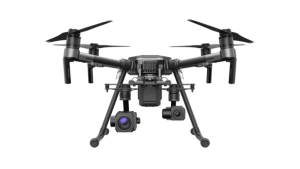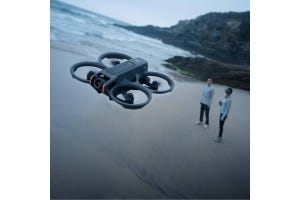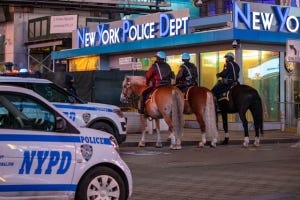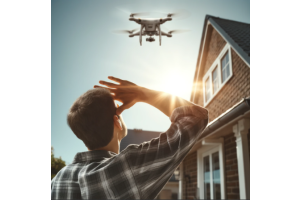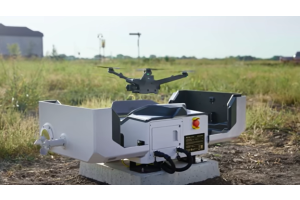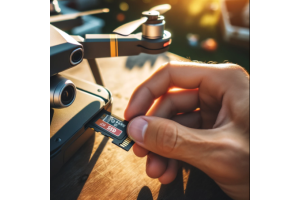Drones are quickly becoming the most widely used tool for many industries. From Police and Fire Departments to farming collectives, drones have become essential to boosting safety and productivity.
Search and Rescue is among the industries heavily affected by the use of drones. Search times can be significantly reduced while limiting potential risk to the party being rescued as well as rescuers. There are many options and benefits to using drones for search and rescue:
As seen in the image to the left, thermal imaging is a major positive for search and rescue. Body heat naturally makes humans stand out from plant life, making them easy to spot very quickly.
Most thermal cameras also have the option to change the color palette for a wide variety of options to make sure you can see exactly what you’re looking for. “White Hot” as shown in the image is perfect for search and rescue as the subjects stand out vibrantly from the surrounding plant life.
Almost all commercial drones come equipped with GPS, allowing the pilot to offer rescue teams the exact GPS coordinates of the subjects once they have been spotted. With the live view feature of any drone used for search and rescue, the pilot can also guide rescue crews to their location.

There is no point sending any aircraft into the air for SAR if the visuals can’t be relayed to the ground team or command unit.
Drones like the Inspire 1 or Matrice 200 series have the capability to run an HDMI cable from the controller to a stand-alone monitor for on-site viewing or to a broadcast terminal to send to a remote command center. The DJI Lightbridge transmission system in these aircraft allow for up to 1080p HD images to stream on a larger monitor for easier spotting of subjects in real-time.
As we mentioned before, this allows pilots or command crews to guide rescue teams to the precise location of their subjects, and the aerial view also aids in steering those crews around any obstacles or hazards that may be in their path.
ZOOM CAMERAS
Once a subject has been spotted (or possibly spotted), optical zoom cameras like the Z3 or Z30 can be used to check on their well-being to analyze the severity of the rescue and make sure rescue teams have the equipment necessary to get their subject back safely.
If the subject has a broken leg, for instance, rescue crews will likely need to have a stretcher with them. This information can save valuable time in the rescue operation, time that could mean life or death. All of this can be assessed while maintaining a safe distance from all parties involved.
In some situations such as on hiking trails that may have multiple people on it or a search for a particular person wanted by law enforcement, a positive identification may be required. Zoom cameras are perfect for this application. In the video below, Garret Byrl states “The second part was to determine the ability to locate a wandering person or someone that otherwise wants to be found. Not only was it relatively easy to find them but the Z30 also has the ability to zoom in and make a positive identification without sending in ground crew.”
Payload drop systems (such as the Skyzkmir Stork for the Inspire 1) allow crews to get life-saving tools, supplies, or communication devices to subjects.
In flood rescue situations, people can become stranded, surrounded by water. Life jackets and “rescue lines” can be dropped to victims to help rescuers guide them to safety.
In a situation where a person would need to be lifted from their position, water and communication devices can be dropped to sustain them and maintain contact until a crew can arrive to lift them from their position. While most sUAS payload systems can’t carry very large weights, they can usually carry enough to keep people safe until people get to their location to help them. A bottle of water and radio can go a long way when someone is dehydrated and panicking.

Image source: https://twitter.com/DroneHoundUS
SPOTLIGHTS
One option that is often overlooked is the ability to add spotlights to drones. Once manned crews have arrived on a scene, having an overhead spotlight can free up their hands to allow them to focus on their work.
Options like the Lume Cube are essential tools for many industries and can be deployed quickly to shed light on whatever subject necessary. It also creates additional visibility for the drone for pilots during night operations. They can also be deployed towards the front or sides to illuminate obstacles that may otherwise impede safe operation of the aircraft.
SUGGESTED DRONE: MATRICE 210
With IP43 water and dust resistance, and the option for dual cameras, the Matrice 210 is the ideal drone for SAR operations. The 210 can carry both the Zenmuse XT and Z3 or Z30 at the same time, and the live feed can be toggled in the DJI app to get either view without having to land to switch between the two. It also has a built-in FPV camera for a straight forward view regardless of where the gimbals are pointed, so the pilot can operate the aircraft safely.
Head to our website or give us a call to get started with a consultation for the SAR drone that suits your company’s needs!
BUT WAIT, THERE’S MORE!
• Check out an article about Lives Saved by drones published in March 2017.
• Video from DJI about DEEMI and how they use drones for their SAR operations
• Spotlight: Matrice 200 Search and Rescue in Extreme Environments
• Demonstration: Drone with thermal finds missing girl near partially frozen river



